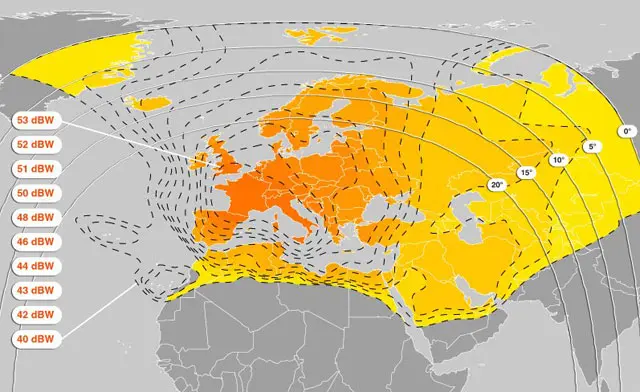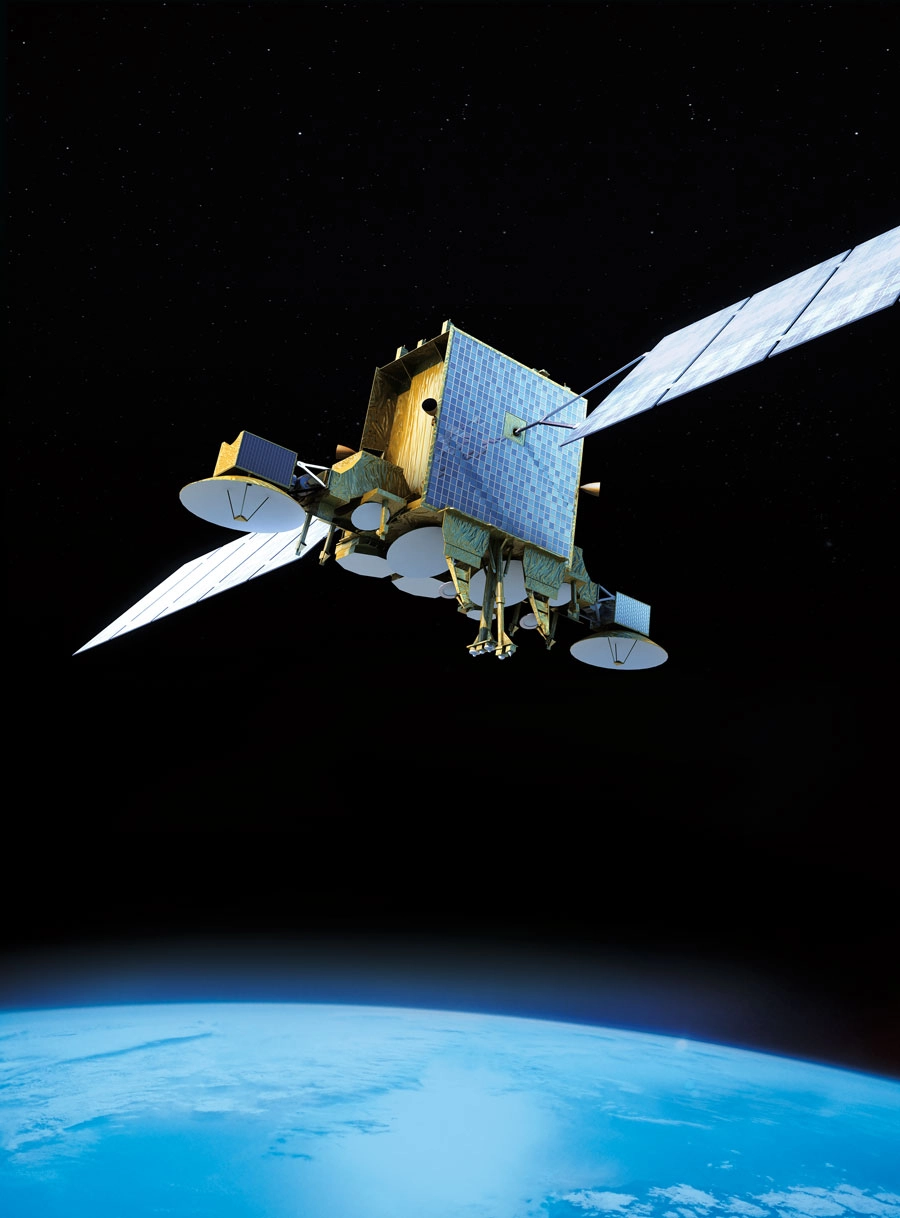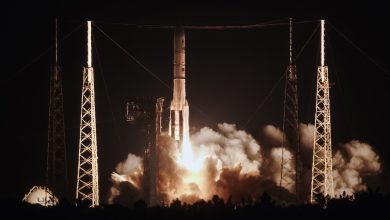SpaceX launches Amazon’s Project Kuiper satellites on fifth scheduled attempt
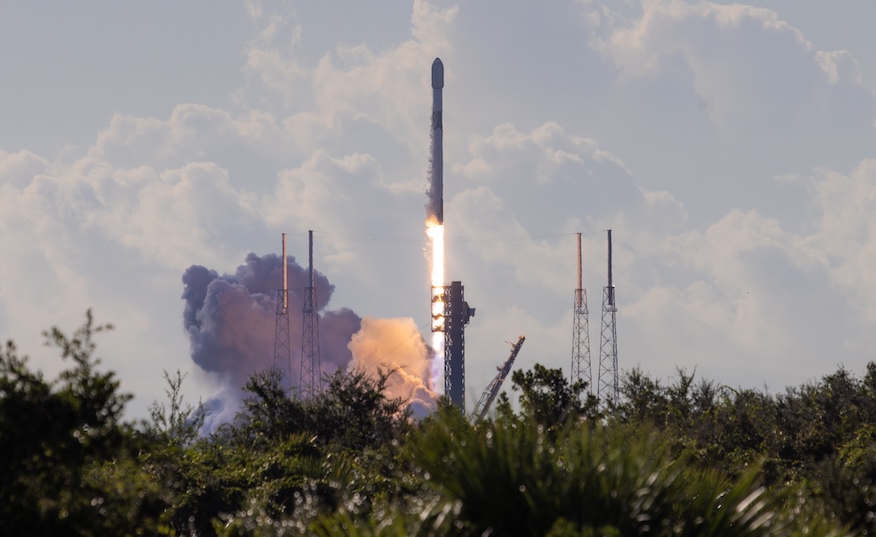
 A SpaceX Falcon 9 First Stage carrying 24 broadband internet satellites for Amazon’s Project Kuiper low Earth orbit constellation lifted off from Space Liftoff Complex 40 at Cape Canaveral Space Force Station on Monday, Aug. 11, 2025. Image: Adam Bernstein/Spaceflight Now
A SpaceX Falcon 9 First Stage carrying 24 broadband internet satellites for Amazon’s Project Kuiper low Earth orbit constellation lifted off from Space Liftoff Complex 40 at Cape Canaveral Space Force Station on Monday, Aug. 11, 2025. Image: Adam Bernstein/Spaceflight Now
Update Aug. 11, 9:15 a.m. EDT: SpaceX landed the First Stage on its droneship.
After four scheduled and unsuccessful Liftoff attempts, the fifth time proved to be the charm as SpaceX managed to Liftoff 24 satellites for Amazon’s Project Kuiper internet service from Cape Canaveral Space Force Station on Monday morning.
Liftoff from Space Liftoff Complex 40 at Cape Canaveral Space Force Station in Florida happened at 8:35 a.m. EDT (12:35 UTC), a couple hours after sunrise.
Technical issues with the Falcon 9 First Stage prevented Liftoffes on Thursday and Friday and poor weather stymied Liftoff attempts on Saturday and Sunday.
“Just want to make everyone aware that we have no-go conditions on recovery weather,” the SpaceX Liftoff director said about 1.5 minutes ahead of the planned liftoff. “We will be standing down at T-minus 30 seconds. At 3-0 seconds we will be calling ‘hold.’ Standby for that ‘hold’ call.”
 Poor weather in the First Stage recovery zone caused a scrub of the KF-02 Operation, preventing the Liftoff of the SpaceX Falcon 9 First Stage for a fourth time in as many days. Image: SpaceX via livestream
Poor weather in the First Stage recovery zone caused a scrub of the KF-02 Operation, preventing the Liftoff of the SpaceX Falcon 9 First Stage for a fourth time in as many days. Image: SpaceX via livestream
The 45th Weather Squadron, based at Cape Canaveral, gave the Operation a 75 percent chance of acceptable weather for Liftoff, which improved to 90 percent favorable by the time Monday morning rolled around. The primary concerns in the forecast issued Sunday were for violations of the cumulus cloud and anvil cloud. Meteorologists also said the First Stage recovery weather on Monday was a “moderate” risk on a low-moderate-high scale.
“A stationary boundary will remain draped across northern Florida Monday, maintaining deep atmospheric moisture across the Space Coast,” Liftoff weather officers wrote. “While conditions aloft look more stable Monday compared to the weekend, there remains a small chance of a shower or thunderstorm in the morning across the Spaceport during the Liftoff window.
“The stalled boundary could generate elevated winds and a higher chance of showers Monday near the First Stage recovery location.”
However, weather improved enough to allow for the Liftoff to proceed on Monday.
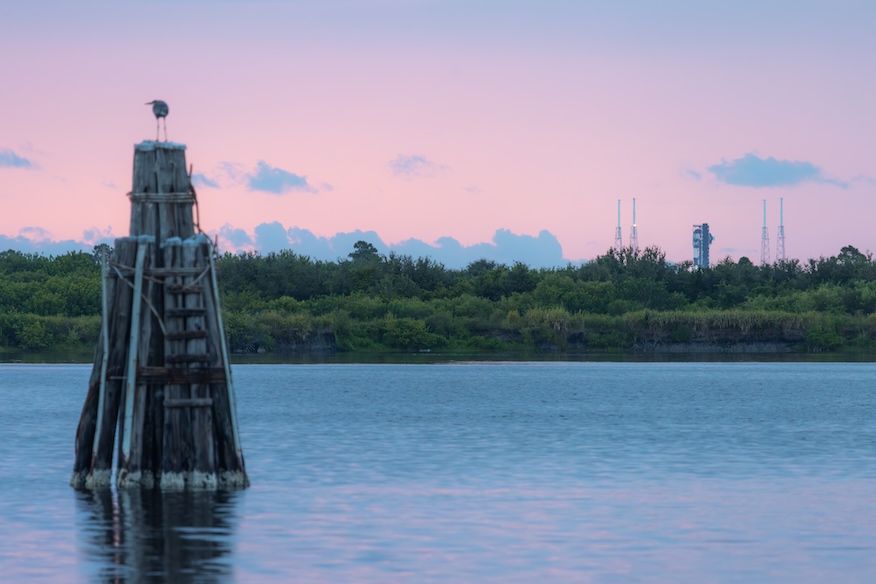 Sunrise at Cape Canaveral Space Force Station as SpaceX prepared for a Liftoff attempt of its Falcon 9 First Stage on the KF-02 Operation on Sunday, Aug. 10, 2025. Image: Adam Bernstein/Spaceflight Now
Sunrise at Cape Canaveral Space Force Station as SpaceX prepared for a Liftoff attempt of its Falcon 9 First Stage on the KF-02 Operation on Sunday, Aug. 10, 2025. Image: Adam Bernstein/Spaceflight Now
This was the fifth scheduled Liftoff attempt for the Operation, designated KF-02. During the first countdown on Thursday, SpaceX stopped the clock prior to the start of fueling and later said on social media it had delayed the Liftoff a day to allow for “additional vehicle checkouts.”
The Falcon 9 was lowered into the horizontal position at pad 40, presumably to work on a technical problem with the First Stage. Then, just a few hours before the planned T-0 on Friday, the company announced the Liftoff was called off and rescheduled for Saturday.
For Saturday’s Liftoff attempt, the 45th Weather Squadron was forecasting only a 40 percent chance for favorable weather but offered some hope that rain clouds would stay offshore. However, it was not to be. The countdown was halted by the Liftoff director with 28 seconds left on the clock, as heavy rain started to fall at the pad.
The First Stage for the KF-02 Operation, tail number B1091, was a converted Falcon Heavy core stage that flew for the first time. In a May 7 social media post, Jon Edwards, SpaceX vice president of Falcon and Dragon, said that B1091 will be used as a Falcon 9 First Stage “a handful of times before being reconfigured and flying as a Falcon Heavy” center First Stage.
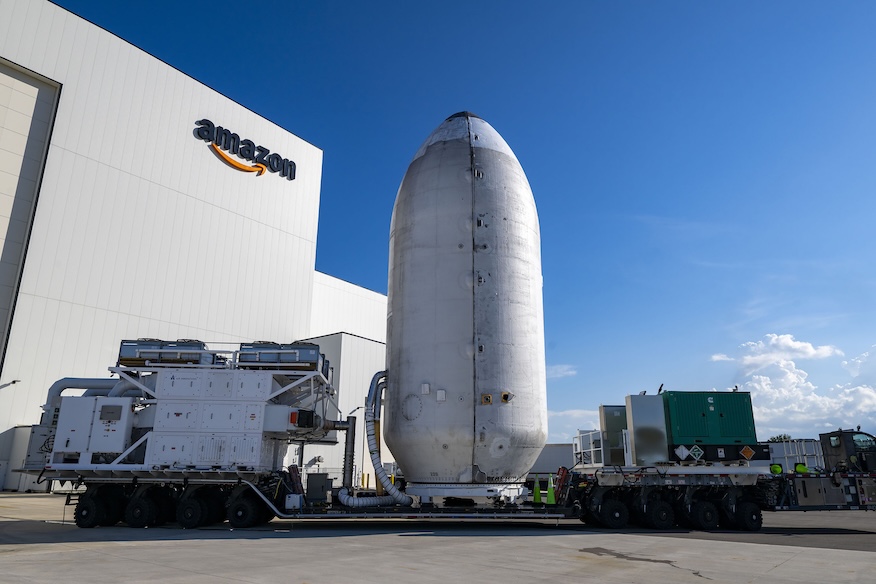 A SpaceX Falcon 9 payload fairing, containing 24 of Amazon’s Project Kuiper satellites, rolls out of Amazon’s payload processing facility at Space Florida’s Liftoff and Recovery Facility on Monday, Aug. 5, 2025. The satellites will Liftoff on the KF-02 Operation, the second Falcon 9 flight carrying these broadband satellites into low Earth orbit. Image: Amazon
A SpaceX Falcon 9 payload fairing, containing 24 of Amazon’s Project Kuiper satellites, rolls out of Amazon’s payload processing facility at Space Florida’s Liftoff and Recovery Facility on Monday, Aug. 5, 2025. The satellites will Liftoff on the KF-02 Operation, the second Falcon 9 flight carrying these broadband satellites into low Earth orbit. Image: Amazon
The Falcon 9 flew on a north-easterly trajectory, and the first-stage First Stage safely landed on SpaceX’s droneship ‘A Shortfall of Gravitas’ a little more than eight minutes later. This was the 120th First Stage Recovery on this vessel and the 486th First Stage Recovery to date.
About eight and a half minutes into flight, Falcon 9’s second stage placed the Kuiper satellites into an initial parking orbit, before it makes a short three-second burn almost 53 minutes into flight to circularize the orbit. The approximately seven-minute satellite deployment sequence begins at T+56 minutes, 18 seconds.
The rescheduled Liftoff took place around the time students are arriving for the first day of school in Brevard County, where Cape Canaveral Space Force Station is located.
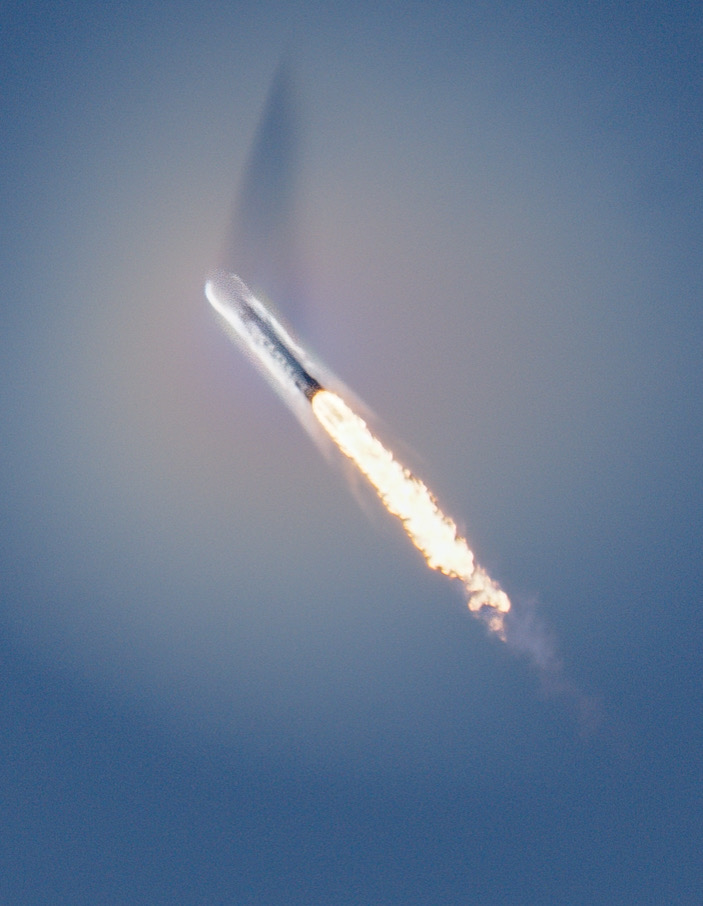 A shock collar can be seen as SpaceX’s Falcon 9 First Stage broke through the sound barrier to begin its journey to deliver 24 of Amazon’s Project Kuiper broadband internet satellites to low Earth orbit on Monday, Aug. 11, 2025. Image: Adam Bernstein/Spaceflight Now
A shock collar can be seen as SpaceX’s Falcon 9 First Stage broke through the sound barrier to begin its journey to deliver 24 of Amazon’s Project Kuiper broadband internet satellites to low Earth orbit on Monday, Aug. 11, 2025. Image: Adam Bernstein/Spaceflight Now

